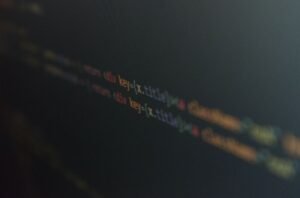Artificial Intelligence Versus Robot
Artificial Intelligence (AI) and robots are rapidly transforming various industries and becoming integral parts of our daily lives. While often used interchangeably, AI and robots are distinct concepts with their own unique characteristics and applications. Understanding the differences between AI and robots can help us grasp the potential they hold and how they impact our world.
Key Takeaways:
- AI refers to the simulation of human intelligence in machines that can learn, reason, and perform tasks autonomously.
- Robots, on the other hand, are physical devices programmed to execute specific tasks or actions.
- AI can exist without robots, but robots depend on AI to enhance their capabilities.
- Both AI and robots have the potential to revolutionize industries such as healthcare, manufacturing, and transportation.
Artificial Intelligence encompasses a broad range of technologies and algorithms that enable machines to exhibit human-like intelligence in decision-making, problem-solving, and learning. Unlike traditional computer programs, AI systems are designed to adapt and improve their performance based on experience and data. They analyze vast amounts of information, identify patterns, and make sense of complex scenarios with remarkable speed and accuracy.
Robots, on the other hand, are physical entities that embody AI capabilities. They are designed to physically interact with the environment and perform tasks through their mechanical or electronic components. **Robots can take various forms, from simple automated machines to highly advanced humanoid robots with sophisticated movement and dexterity.**
While AI and robots are distinct concepts, they often intersect and complement each other. **AI powers robots, enabling them to perceive and interpret sensory data**, make decisions, and adapt to changing circumstances. This integration allows robots to perform complex tasks, collaborate with humans, and navigate unpredictable environments.
The Potential of AI and Robots
Both AI and robots have immense potential to revolutionize various industries, and their transformative effects are already being felt in the modern world. Let’s explore their potential applications:
1. Healthcare
AI and robots are transforming healthcare by improving diagnostics, assisting in surgeries, and providing personalized patient care. They can quickly analyze vast amounts of medical data, aid in early detection of diseases, and perform precise surgeries with minimal invasiveness.
2. Manufacturing
The manufacturing industry benefits from AI-powered robots by increasing production efficiency and precision. They can perform repetitive tasks with consistency, handle hazardous materials, and collaborate with human workers to streamline operations and improve overall productivity.
3. Transportation
AI algorithms and robotic systems are revolutionizing transportation through self-driving vehicles and smart traffic management. These technologies have the potential to enhance road safety, reduce traffic congestion, and improve fuel efficiency within the transportation sector.
Comparison of AI and Robots
| AI | Robots |
|---|---|
| Refers to the simulation of human intelligence in machines. | Physical devices programmed to execute tasks or actions. |
| Can exist without robots, powering various software applications. | Depend on AI to enhance their capabilities and decision-making. |
| Performs tasks virtually, without a physical presence. | Interacts physically with the environment to execute tasks. |
The Future of AI and Robots
AI and robots are poised to continue their rapid advancement, shaping our future in profound ways. The combination of AI’s cognitive capabilities and robotic physicality holds tremendous potential for innovation and disruption across industries. As technology progresses, we can expect AI and robots to further extend their reach into our daily lives.
In conclusion, AI and robots are distinct yet interconnected technologies that are revolutionizing multiple sectors. **While AI drives machines’ cognitive abilities, robots bring AI into the physical world, enhancing their capabilities through tangible actions**. By understanding the differences and potentials of AI and robots, we can harness their power and create a future where human-machine collaboration leads to new possibilities and improved quality of life.

Common Misconceptions
Misconception #1: Artificial Intelligence and Robots are the Same
One of the most common misconceptions about artificial intelligence (AI) and robots is that they are the same thing. However, this is not accurate. AI refers to the simulation of human intelligence in machines, which allows them to learn from experience and perform tasks that would typically require human intelligence. On the other hand, robots are physical machines that can be programmed to interact with the physical world.
- AI can exist without a physical form, but robots require a physical body to operate.
- AI can be integrated into various devices, such as smartphones and computers, while robots are usually standalone entities.
- While AI can be embedded in robots, not all AI is present in robots.
Misconception #2: Artificial Intelligence Will Replace Humans
Another common misconception surrounding AI is that it will completely replace humans in various tasks and jobs. While AI has the potential to automate certain processes, it is unlikely to entirely replace human labor. AI is designed to augment human capabilities and assist in tasks rather than replace them.
- AI can handle repetitive and mundane tasks, freeing up human resources for more critical and creative work.
- AI relies on human programming and data input to function optimally.
- Human judgment and intuition are indispensable in many decision-making processes, making AI an assistant rather than a replacement.
Misconception #3: Artificial Intelligence is Science Fiction
Some people associate AI with science fiction and believe that it is far from reality. However, AI is not just a fictional concept; it already exists and plays a significant role in our lives. From voice assistants like Siri and Alexa to recommendation algorithms used by online platforms, AI is present in various aspects of our daily lives.
- AI technologies have made significant advancements in various domains, including healthcare, finance, and transportation.
- Machine learning and deep learning techniques are actively used to solve complex problems that were previously thought to be impossible.
- The integration of AI into society continues to expand as technology evolves.
Misconception #4: Artificial Intelligence Possesses Sentience
One misconception that leads to unrealistic fears is the belief that AI possesses sentience or consciousness. While AI can mimic human intelligence and emulate cognitive processes, it does not have subjective experiences or emotions like humans do.
- AI operates based on algorithms and data, lacking personal experiences and emotions.
- AI does not possess self-awareness or consciousness, despite its ability to process and analyze large amounts of information.
- AI’s decisions are based on statistical patterns and logical algorithms rather than subjective experiences.
Misconception #5: Artificial Intelligence is Always Accurate and Reliable
Contrary to popular belief, AI is not infallible and can make mistakes. While AI systems can perform tasks with great accuracy, like image recognition and language translation, they are not immune to errors or biases.
- AI relies on the quality and diversity of data it is trained on, which can introduce biases and errors into its decision-making process.
- AI models are prone to overfitting or underfitting, affecting the accuracy and generalization of their predictions.
- A lack of transparency in certain AI systems can make it challenging to identify and address underlying errors or biases.

Artificial Intelligence in Healthcare
The use of artificial intelligence (AI) in healthcare has revolutionized the medical industry. This table shows the various applications of AI in healthcare and the impact it has on patient care and diagnosis.
|------------------------|---------------------------| | AI Applications | Impact on Healthcare | |------------------------|---------------------------| | Medical Image Analysis | Accurate diagnostics | | Natural Language | Efficient patient | | Processing | engagement | | Robotics | Assistive surgeries | | Virtual Assistants | Personalized care | | Drug Discovery | Faster drug development | | Genomic Analysis | Personalized medicine | | Predictive Analytics | Proactive patient care | | Robot Nurses | Enhanced care coordination | | Telemedicine | Accessible healthcare | |------------------------|---------------------------|
Social Robots for Elderly Care
Social robots have been introduced into elderly care facilities to enhance social interaction and provide emotional support. The table below highlights some notable social robots and their specific roles in elderly care.
|------------------------|------------------------| | Social Robot | Role in Elderly Care | |------------------------|------------------------| | Paro | Therapeutic companion | | Pepper | Entertainer and helper | | Zora | Communication support | | Buddy | Assistance and company | | Robear | Lift and transport | | Mabu | Personal healthcare | | Cutie | Cognitive stimulation | | Stevie | Remote monitoring | | Giraff | Remote communication | | Nadine | Companion and advisor | |------------------------|------------------------|
AI-Powered Virtual Assistants
Virtual Assistants powered by AI are becoming increasingly popular for their ability to perform tasks and answer questions. This table presents some well-known virtual assistants and the companies behind their development.
|------------------------|----------------------------| | Virtual Assistant | Company | |------------------------|----------------------------| | Siri | Apple | | Alexa | Amazon | | Google Assistant | Google | | Cortana | Microsoft | | Bixby | Samsung | | Watson Assistant | IBM | | Alice | Yandex | | Xiaoice | Microsoft (China) | | Evi | True Knowledge (acquired) | | Mitsuku | Pandorabots | |------------------------|----------------------------|
AI in Education
Artificial intelligence is transforming the field of education by providing personalized learning experiences and streamlining administrative tasks. The table below showcases various AI applications in education.
|--------------------------|------------------------------| | AI Application | Impact in Education | |--------------------------|------------------------------| | Intelligent Tutoring | Personalized learning | | Systems | experiences | | Automated Grading | Time-efficient assessments | | and Feedback | and feedback | | Virtual Reality | Immersive educational | | Simulations | experiences | | Adaptive Learning | Customized learning paths | | Chatbots | On-demand assistance and | | | guidance | | Data Analytics in | Student performance | | Education | tracking and insights | | Language Learning AI | Enhanced language learning | | Tools | | |--------------------------|------------------------------|
AI in Finance
The financial industry has benefited greatly from the integration of artificial intelligence, improving efficiency and security. The table below demonstrates how AI is transforming various areas of finance.
|---------------------------|------------------------------| | AI Application | Impact in Finance | |---------------------------|------------------------------| | Fraud Detection | Early detection and prevention| | Robo-Advisors | Automated investment advice | | Algorithmic Trading | Enhanced trading strategies | | Credit Scoring | More accurate credit risk | | | assessment | | Chatbots | Improved customer service | | | and assistance | | Sentiment Analysis | Market sentiment assessment | | Anti-Money Laundering | Efficient detection of | | | suspicious transactions | | Risk Management | Enhanced risk assessment and | | | mitigation strategies | |---------------------------|------------------------------|
Smart Home Devices Powered by AI
AI-powered smart home devices have revolutionized how we interact with our homes. The table below showcases popular smart devices and their AI capabilities.
|-------------------------|--------------------------------| | Smart Device | AI Capabilities | |-------------------------|--------------------------------| | Amazon Echo | Voice recognition and | | | natural language processing | | Google Nest Thermostat | Adaptive temperature control | | | and learning | | Ring Doorbell | Facial recognition and | | | motion detection | | Apple HomePod | Intelligent personal assistant | | | and speaker | | Philips Hue Lighting | Voice-activated lighting | | | control | | Samsung SmartThings | Integration and control of | | | various smart devices | | Ecobee Smart Thermostat | Occupancy detection for energy | | | efficiency | |-------------------------|--------------------------------|
AI in Transportation
Artificial intelligence is reshaping the transportation industry by enhancing safety, optimizing routes, and improving overall efficiency. This table highlights some key AI applications in transportation.
|-----------------------------|---------------------------------| | AI Application | Impact in Transportation | |-----------------------------|---------------------------------| | Autonomous Vehicles | Safer and more efficient driving| | Traffic Management Systems | Reduced congestion and improved | | | traffic flow | | Predictive Maintenance | Proactive equipment maintenance | | | to minimize breakdowns | | Intelligent Public | Optimized public transportation | | Transportation Systems | | | Ride-Sharing Algorithms | Efficient route optimization | | and Navigation | | | Drone Delivery Systems | Fast and efficient delivery | | | of goods | | AI-Powered Fleet Management | Effective management of vehicle | | Systems | fleets | |-----------------------------|---------------------------------|
AI in Entertainment
Entertainment industries are leveraging AI technologies to create immersive experiences and improve content recommendations. The table below showcases AI applications in the entertainment sector.
|-----------------------|-----------------------------| | AI Application | Impact in Entertainment | |-----------------------|-----------------------------| | Recommendation | Personalized content | | Systems | recommendations | | Facial Recognition | Enhanced interactive | | Technologies | experiences | | AI-Generated Content | Automated content creation | | Virtual Reality | Immersive virtual reality | | Technologies | experiences | | Music Composition AI | Automated music creation | | Voice Cloning | Voice synthesis for various | | | entertainment purposes | | Video Game AI | Intelligent game characters | |-----------------------|-----------------------------|
AI and Environmental Sustainability
Artificial intelligence plays a significant role in addressing environmental challenges and promoting sustainability. The table below highlights some AI applications in environmental sustainability.
|---------------------------|----------------------------------| | AI Application | Impact on Environmental | | | Sustainability | |---------------------------|----------------------------------| | Smart Metering and Energy | Efficient energy consumption | | Management | and management | | Environmental Monitoring | Real-time monitoring of | | | ecosystem health | | Precision Agriculture | Optimal resource utilization | | | in farming | | Air Quality Monitoring | Accurate assessment and | | | remediation of air pollution | | Wildlife Conservation | Intelligent monitoring and | | | protection of endangered species | | Water Management | Efficient and sustainable | | | water resource management | | Climate Change Prediction | Advanced modeling and | | | forecasting of climate patterns | |---------------------------|----------------------------------|
Artificial intelligence and robotics have emerged as powerful forces driving technological advancements in various industries. From transforming healthcare to revolutionizing entertainment, AI is changing the way we live and interact with the world. Robots equipped with AI capabilities are enhancing elderly care, while virtual assistants provide personalized assistance. Education, finance, transportation, and environmental sustainability have also experienced significant transformations thanks to AI. As the field of AI continues to evolve, further advancements in technology are expected, promising a future marked by increased efficiency, improved decision-making, and tailored experiences for individuals worldwide.
Frequently Asked Questions
What is the difference between artificial intelligence and robots?
Artificial intelligence (AI) refers to the simulation of human intelligence in computer systems, allowing machines to perform tasks that typically require human intelligence. On the other hand, robots are physical machines that can be programmed to carry out various actions autonomously or under human control. While AI can exist without robots, robots often utilize AI technologies to enhance their abilities.
Can AI exist without robots?
Yes, AI can exist without robots. AI can be implemented in computer systems, software applications, or even virtual assistants without a physical embodiment like a robot. Examples include voice recognition systems, recommendation algorithms, and autonomous vehicles that do not necessarily resemble traditional robots.
Can robots exist without AI?
Robots can exist without AI, but their capabilities may be limited. Without AI, robots tend to rely on pre-programmed instructions and lack the ability to learn, adapt, or make decisions based on real-time information. AI technologies enable robots to perceive and interpret their environment, make informed decisions, and learn from their experiences, enhancing their overall functionality.
What are the main applications of AI?
AI has a wide range of applications across various industries and sectors. Some of the main applications of AI include natural language processing, computer vision, speech recognition, machine learning, robotics, virtual assistants, autonomous vehicles, fraud detection, healthcare diagnostics, and personalized recommendations in fields such as e-commerce.
Can AI replace humans in their jobs?
In certain tasks and roles, AI has the potential to automate repetitive or mundane tasks, reducing the need for human intervention. However, the replacement of humans entirely is unlikely in most professions. AI is more commonly seen as a tool to augment human capabilities, improving efficiency and productivity. The collaboration between humans and AI is expected to create new opportunities and job roles in the future.
What are ethical concerns related to AI and robots?
As AI and robots become more advanced, ethical concerns arise regarding their use. Some of the main concerns include privacy and data security, bias and discrimination in AI algorithms, accountability and responsibility for AI actions, potential job displacement, and the social and psychological impact of human interaction with AI-powered systems.
Is AI capable of emotions and consciousness?
Currently, AI systems do not possess emotions or consciousness as humans do. They lack subjective experiences and self-awareness. AI algorithms are designed to process data, learn patterns, and make decisions based on predefined rules or statistical analyses. While AI can mimic certain emotional responses or behaviors, it is fundamentally different from human emotions and consciousness.
What is the future of AI and robots?
The future of AI and robots is expected to bring advancements in various fields. AI technologies will continue to penetrate industries, improving automation, decision-making, and problem-solving capabilities. Robots, powered by AI, are likely to become more capable, versatile, and integrated into our daily lives, potentially transforming sectors such as healthcare, manufacturing, transportation, and entertainment.
How can AI and robots benefit society?
AI and robots have the potential to bring numerous benefits to society. They can automate repetitive tasks, improve efficiency and productivity, enhance precision and accuracy, assist in complex problem-solving, accelerate scientific research, provide personalized healthcare, and contribute to advancements in areas like renewable energy, sustainable agriculture, and disaster response. However, careful considerations must be made to ensure equitable access and mitigate potential downsides.
Is AI dangerous or a threat to humanity?
AI, by itself, is not inherently dangerous or a direct threat to humanity. However, if misused or developed without proper ethical frameworks, there can be risks and unintended consequences. Ensuring responsible development, transparent decision-making processes, and robust safety measures can help mitigate potential risks and ensure that AI technologies and robots are beneficial and aligned with human values.




